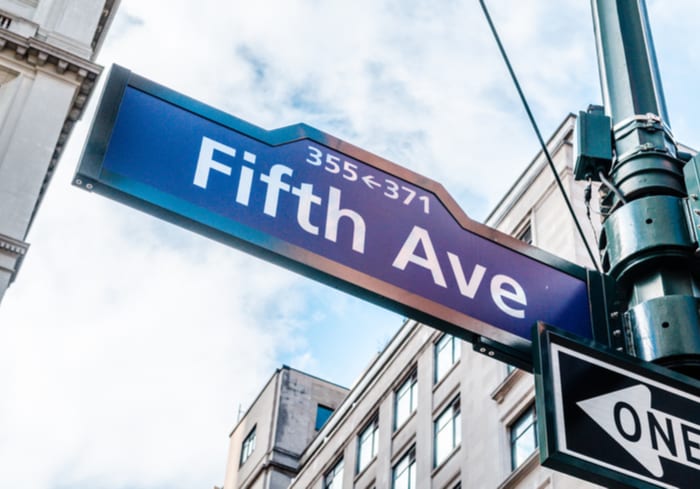
As retailers shutter locations from the heartland to big cities, the latest update on the state of retail from New York’s storied Fifth Avenue says that rents are falling and vacancies are rising – showing that even a flagship address can’t escape the realities of modern-day commerce.
In the blocks spanning 49th to 60th Streets, average ground-floor asking store rents clocked in at $2,779 per square foot in Q1 – a decrease of 11 percent from their Q1 2017 peak. The availability rate on those blocks – a measure that includes expiring leases that haven’t been filled as well as vacancies – arrived at 25 percent in Q1, compared to 17.4 percent in Q1 2018 but down from 27.5 percent in Q4.
The portion of the corridor that ranges from Saks Fifth Avenue at East 49th Street to Central Park’s southeast corner is considered to be a big tourist attraction in the city. It counts high-end brands such as Rolex, Tiffany & Co. and Gucci. And big retailers would absorb losses or take thinner margins due to the marketing strength and prestige of the location.
Cowen Inc. Senior Equity Analyst Oliver Chen said, according to The Wall Street Journal, “A lot of these Fifth Avenue stores are emotional brand statements and almost churches to the brand.” But it has become harder for fashion houses, along with other merchants, to accept high rents in the age of eCommerce.
In one case of a closing store on the retail corridor, Massimo Dutti plans to shutter its 54th Street location this year, per the Vornado Realty Trust. And, in other instances, Tommy Hilfiger and Gap Inc. have shuttered their Fifth Avenue stores to turn their attention to online shopping. In 2017, Ralph Lauren, too, closed its Fifth Avenue store – a space that has reportedly stayed empty.
Store Closures
The closings on Fifth Avenue are part of a more significant trend: As of a March report, 4,810 retail store closures had been announced in 2019. By contrast, Coresight noted there had been around 2,264 store openings per reports at the time, with Peloton, Ulta Beauty, Indochino and Ross Stores creating locations. However, the closings outpace the openings, which is leading concerned real estate companies to look for new concepts or businesses to fill the empty spaces left behind.
In April, a report from investment firm UBS indicated that an estimated 75,000 stores are likely to shut down by 2026. The closures are said to impact a range of retailers such as apparel, home furnishings and consumer electronics, as more Americans prefer to shop via eCommerce. The firm reported that the average U.S. household spent $5,200 online last year, which marked a jump of almost 50 percent from five years prior.
D.A. Davidson Senior Brand Apparel Analyst John D. Morris said, according to The Washington Post, “This is a healthy cleansing for the retail industry. We’re in the middle of a multi-year retail purge. Companies are finding that when it comes to stores, less is more.”